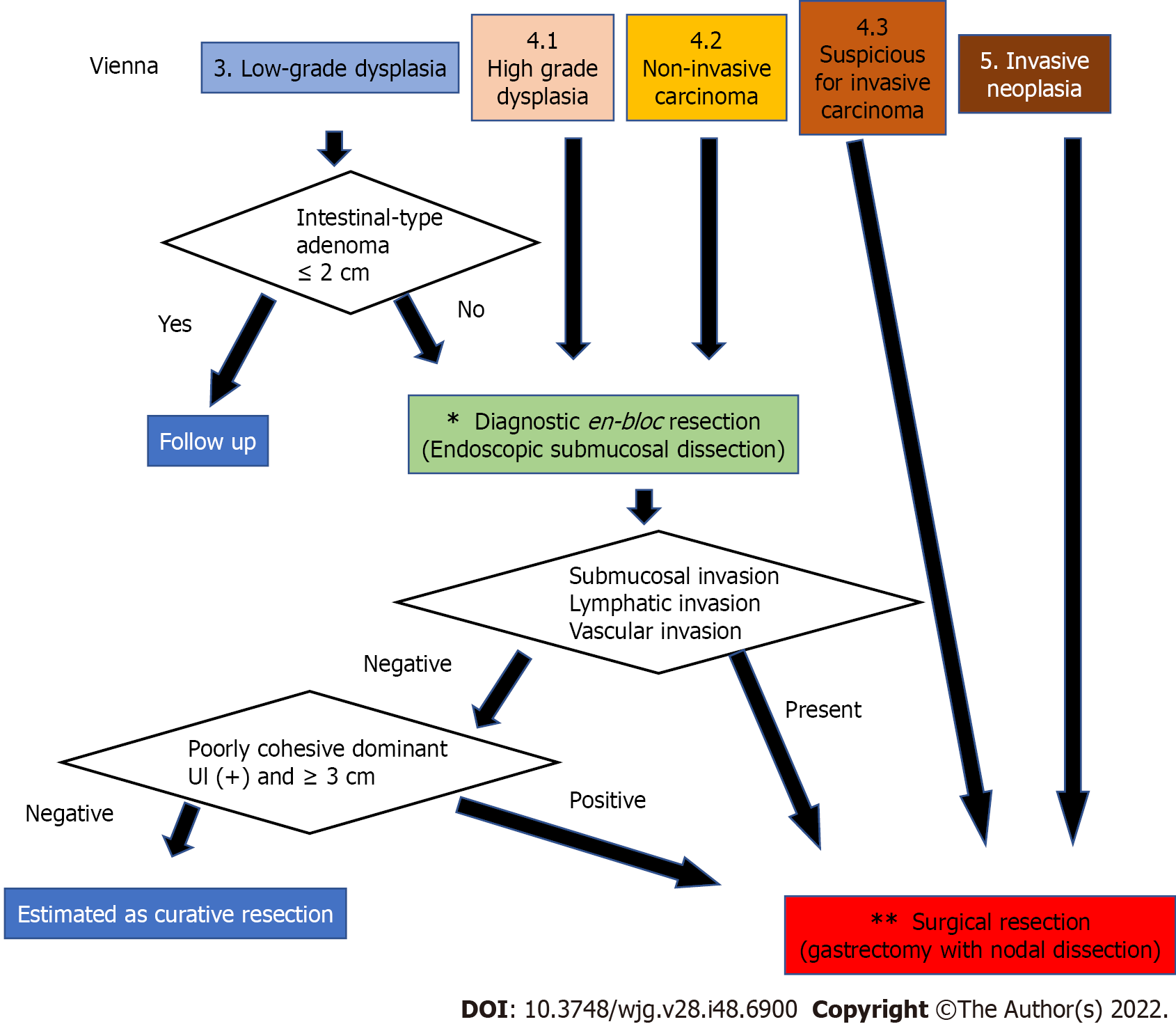Copyright
©The Author(s) 2022.
World J Gastroenterol. Dec 28, 2022; 28(48): 6900-6908
Published online Dec 28, 2022. doi: 10.3748/wjg.v28.i48.6900
Published online Dec 28, 2022. doi: 10.3748/wjg.v28.i48.6900
Figure 3 The strategy for diagnosis, staging, and treatment of gastric dysplasia and cancer according to the Vienna classification.
Since category 3 and 4 Lesions are highly likely to be mucosal adenocarcinomas according to the Japanese Gastric Cancer Association (JGCA) criteria, complete en bloc resection of the mucosal layer is desirable for diagnosis and initial treatment. However, a small part of category 3, such as a small intestinal-type adenoma judged by the JCGA criteria, can be followed up. In contrast, category 5 corresponds to submucosal adenocarcinoma according to the JGCA criteria; therefore, curative surgery is necessary. Category 4.3 was also treated surgically. The asterisk (*): For en bloc mucosal resection, endoscopic submucosal dissection is appropriate; however, laparoscopic intragastric surgery may also be acceptable in cases where there is no skilled endoscopist. The two asterisks (**): Gastrectomy with lymph node dissection up to D1+ is recommended for surgical treatment. However, since the possibility of lymph node metastasis is only 15%-20% even for such lesions, function-preserving curative gastrectomy guided by sentinel lymph node biopsy can be performed by a specialist.
- Citation: Kinami S, Yamada S, Takamura H. Confusion and prospects for carcinogenesis of gastric adenoma and dysplasia: What is the correct answer currently? World J Gastroenterol 2022; 28(48): 6900-6908
- URL: https://www.wjgnet.com/1007-9327/full/v28/i48/6900.htm
- DOI: https://dx.doi.org/10.3748/wjg.v28.i48.6900









